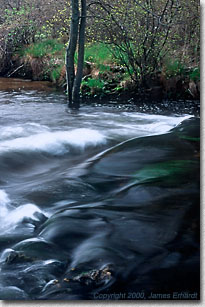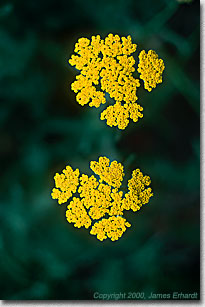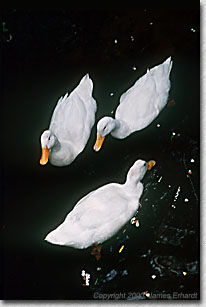
|

Camera Equipment Review...
Canon 50mm f/1.4 USM
Text Copyright and Photography Copyright Jim Erhardt
All rights reserved.
 They’re relegated to the bottom of the camera bag to collect dust, under the more glamorous telephoto, wide angle, macro, and zoom lenses. They’re neither long enough, nor wide enough for most photographer’s tastes, caught in the no mans land between telephoto and wide angle. And to add insult to injury, their once popular niche as the “standard lens” for a new 35mm SLR has been completely displaced by those slow-as-molasses, distortion-prone mid-range zooms. For most modern day nature photographers, the thought of using, much less buying, a “standard 50mm” lens is all but forgotten.
They’re relegated to the bottom of the camera bag to collect dust, under the more glamorous telephoto, wide angle, macro, and zoom lenses. They’re neither long enough, nor wide enough for most photographer’s tastes, caught in the no mans land between telephoto and wide angle. And to add insult to injury, their once popular niche as the “standard lens” for a new 35mm SLR has been completely displaced by those slow-as-molasses, distortion-prone mid-range zooms. For most modern day nature photographers, the thought of using, much less buying, a “standard 50mm” lens is all but forgotten.
To truly appreciate the standard 50mm is to understand its unique benefits seen in few other lenses. First and foremost, it is the fastest lens available for a 35mm SLR. Not only excellent for hand-held photography in low-light conditions, but its wide aperture also allows for selective focus and shallow depth-of-field. When stopped down, it can render a scene tack sharp from front to back. Images taken with the standard 50mm exhibit superb sharpness and contrast found only in the most expensive pro-level zooms. Add to all of this its inherent low distortion, compact size and lightweight, and you can begin to appreciate the value and utility the standard 50mm represents.
I acquired Canon’s latest reincarnation of the standard 50mm, the 50/1.4 USM about 6 months ago. It is well constructed, featuring full-time manual-focus override and a wide, nicely damped focusing ring. Autofocusing, while not quite as fast and silent as other Canon USM lenses, is far superior to Canon’s older micro-motor mechanisms. As expected, image quality is excellent, with just a trace of barrel distortion. While I’ll admit that it is not the most frequently used lens I own, it does serve a purpose that no other lens in my bag can do as well. As with any other tool, understanding the strengths and weaknesses of any lens is the key to its successful use.
 After owning several models of Canon’s “standard zoom,” including the
28-105/3.5-4.5 USM and the 24-85/3.5-4.5 USM, I realized these lenses have some limitations. Compared to the 50/1.4, they are a full 3-stops slower, necessitating faster film, flash or tripod in low-light situations. Another objection I have with these zooms is the excessive barrel/pin cushion distortion, a characteristic of this whole class of lenses, regardless of brand name. Although overall optical quality is quite high, I learned to avoid straight lines at the edge of the frame when using these lenses.
After owning several models of Canon’s “standard zoom,” including the
28-105/3.5-4.5 USM and the 24-85/3.5-4.5 USM, I realized these lenses have some limitations. Compared to the 50/1.4, they are a full 3-stops slower, necessitating faster film, flash or tripod in low-light situations. Another objection I have with these zooms is the excessive barrel/pin cushion distortion, a characteristic of this whole class of lenses, regardless of brand name. Although overall optical quality is quite high, I learned to avoid straight lines at the edge of the frame when using these lenses.
While many will dismiss the 50mm focal length as being “compositionally challenged,” I’ve captured many memorable images with the standard 50mm over the 25 years I have enjoyed photography. Like a throwback to the days when I carried a Minolta SR-T 201 with a Rokkor 50/1.7, the new 50/1.4 finally refilled the niche I had lost when the old Minolta equipment was stolen. With the 50/1.4 mounted on a “naked” EOS 1N body (no booster or battery pack attached), I once again have a compact system that is easy to carry for casual and vacation photography, or anytime I need to comfortably carry a camera over my shoulder for fast access. While the EOS 1N and 50/1.4 USM are a bit heavier than the old Minolta setup, it’s obviously a far more capable system.
With so many excellent telephotos, wide angle and macro lenses available, why would a nature photographer want to bother with a standard 50mm? The 50mm, combined with a compact camera body, is lightweight and accessible, enabling quick “grab shots” along the trail that might otherwise be passed up. With high shutter speeds attainable at f/1.4, sharp, hand-held images taken “on the fly” are once again possible. The narrow depth of field and selective focus we enjoy with our telephotos can be achieved with the 50/1.4, opening the door to new artistic opportunities in hand-held nature photography. Using the 50mm stopped down, an entire scene can be rendered in sharp focus as well. With the addition of an extension tube, the standard 50mm becomes a viable macro lens, capable of magnification ratios of well beyond 1:2. All of this is possible with the superb optical quality that the standard 50mm is famous for.
 Should the standard 50mm be high on the wish list of every nature photographer? Probably not. In many cases, the macro version may make more sense. On the other hand, it should not be written off too quickly. Many budding nature photographers would be better served with the standard 50mm instead of the mediocre zoom that accompanies most entry-level SLR camera sales these days. In fact, the current 1.8 versions of the standard 50mm are not only less expensive than the typical standard zoom, but will run “optical circles” around it as well.
Should the standard 50mm be high on the wish list of every nature photographer? Probably not. In many cases, the macro version may make more sense. On the other hand, it should not be written off too quickly. Many budding nature photographers would be better served with the standard 50mm instead of the mediocre zoom that accompanies most entry-level SLR camera sales these days. In fact, the current 1.8 versions of the standard 50mm are not only less expensive than the typical standard zoom, but will run “optical circles” around it as well.
For me, the standard 50mm makes a lot of sense. It has perfectly filled the niche for which I bought it. If you’re searching for a versatile lens that is compact, extremely fast, and offers the highest imaging performance, the 50mm has always been and will continue to be an excellent choice. And the Canon 50/1.4 USM may very well be the best of the breed.
JE-NPN


|